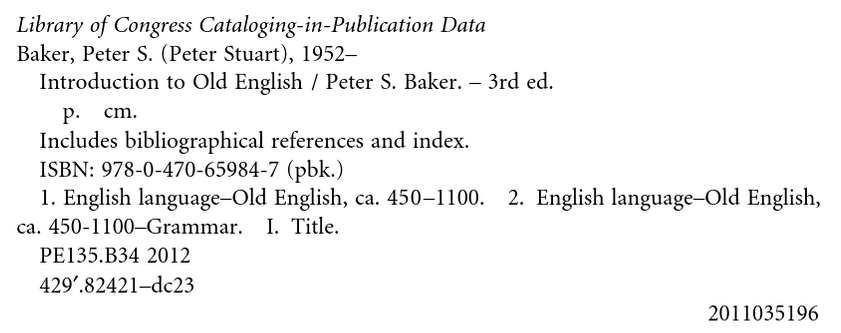Last Updated: 06 Jul, 2023 Views: 30770
Finding the dates of books can be difficult. You have the original publication date, reprint dates and dates for new editions.
Use the publication date for the edition you have seen and are referring to.
Reprints vs New Editions
If a book has been reprinted by the publisher of the original book, this might simply mean a new copy has been produced - the information in the book probably has not changed (although the formatting may have changed slightly and some spelling errors might have been corrected). For example, you see a list of dates giving the copyright as 2010, but also giving a "third reprinting" date of 2012. The date of publication for that book is still 2010.
A new edition, however, has changed some of the contents of the book, so you need the publication date for that edition.
Republished and translated books
A republished book is one where a book that was originally published some time ago, or buy a different publisher, has been published without modification to the content (but potentially with modification to the formatting). You will need to confirm with the style you are using which dates to use in this case. You should be using the date of the work you have seen (the newer book), but your style may require you to use both dates - the original publication and the later republication.
Translated books are similar - there is the date the original work was published and the date the translation was published. If you used the translation, that is the date of publication you should use, but the referencing style might require you to use both dates.
Look for the copyright date
A good rule of thumb is to use the copyright date of the book and confirm with the date in the Library of Congress Cataloging-in-Publication Data (if available).
Look at the verso page for your book (this is the "other side" of the title page. You should be able to find it in an eBook, as well as a print book, but it may be in a separate section called "front matter" - DO NOT use the information on the book preview/overview, but always consult the book itself). Find the copyright date on that page.
The copyright date is a good guide, but it's not always reliable, unless it's the only date on the page. Confirm the copyright date by checking the Library of Congress data:
- Find the Library of Congress Cataloging-in-Publication Data.
- Find the LOC number (it's usually the second last line of the Cataloging-in-Publication Data - just above the Dewey number) - the year of publication follows the LOC.
For example:
LCC LB2369.G32 2009 (the publication date is 2009)
LCC BF76.7.P83 2010 (the publication date is 2010)
LCC PE135.B34 2012 (the publication date is 2012)

N.B. Some referencing styles use the word "reprinted" to refer to works that exist in two different forms at the same time - for example, APA uses "reprinted work" to talk about a journal article that has been reproduced as a chapter of a book when both versions are available. Refer to the style guide's instructions for what to do with the publication date in these cases. As with republished and translated works, you may need to include both dates.
Was this helpful? 25 12
Comments (2)
-
Knowing to stick w the copyright date is helpful. Tnx! What about "©1964. Reprinted from corrected sheets of the first edition 1966."by Richrd Hawley Trowbridge on 30 Mar, 2023
-
Hi, Richard - that's an unusual one, and I'd probably want to see the full details for the book before giving a difinitive answer (please don't include them here - if you would like specific help send it to our contacts so we can reply directly), but if the information it gives you implies there was a change after the initial publication and the information in this copy might not be identical to information in earlier books with the same publication date, then my advice would be to still give the date that will help people find the book (usually the copyright date or the date that appears near the LoC number). Check a library record for the copy you are using and see what date they have used. If you think it's important to note the potential changes, you can also include the second date. You can do that one of two ways. The first is to use a double date. It depends on the style, but normally a double date has both the original publication and the date of the version in your hands (e.g. 1964/1966). The second is to include the extra details after the title - usually in [square brackets]. For example: Title of book [1966 revised printing]. Hope this helpsby Sharon Bryan on 20 Apr, 2023
